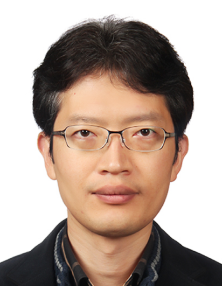
Office
Tel
Prof. In Gwun Jang’s research focuses on multidisciplinary analysis and design optimization for human and vehicular mobility. Specifically, his current research areas include patient-specific bone health assessment, multi-receiver wireless power transfer systems, and vehicle routing problems, all of which are difficult to solve with conventional schemes. His goal is to propose a novel optimization method that can solve the above challenging issues and develop an innovative system that can provide enhanced mobility to people.
The In Gwun Jang lab takes a system-based approach to understand a given problem and solve the problem from the multidisciplinary viewpoint.
Ongoing Research:
Patient-specific bone health assessment
Bones mainly serve as supporting columns which transfer body weight, or levers which permit the various motions of the body. In daily activities, bones are subject to a variety of axial, bending, and torsional loads, and they are adapted to obtain the “maximum” mechanical efficiency with the “minimum” mass. This phenomenon is well known as Wolff’s law. The goal of this research area is to investigate the governing principles of bone metabolism and to apply them to biomechanical and biomedical engineering through implementing design optimization. Biomechanical simulation focuses on the development of computational bone remodeling simulations which phenomenologically estimate bone microstructure alternation. With the help of these techniques, a new resolution enhancement method is proposed to reconstruct high-resolution skeletal images from low-resolution clinical scan data.
Multi-receiver wireless power transfer
Electromagnetics is a branch of physics that explores the electric and magnetic phenomena. Maxwell’ equations provide how electric and magnetic fields are generated, propagated, and interacted each other. The goal of this research area is to develop the optimization frameworks for the electromagnetic systems such as wireless power transfer (WPT) and electric motors. For the purpose, it is necessary to set up an appropriate set of design variables and to formulate the objective and constraint functions in terms of the design variables. Through this process, we can determine the optimized design variables to extremize a given objective function (e.g., transfer efficiency) while satisfying all the constraints (e.g., rated power and safety criteria). Electromagnetics and circuit analyses are typically used to investigate the system behavior and to measure various system performances.
Vehicle routing
In combinatorial optimization, vehicle routing problems (VRPs) are classified as NP-hard problems, which are very difficult and time-consuming to solve. Hence, there is an ever-growing demand for developing a new method that can provide an optimal (or at least near-optimal) solution for these problems with less computing cost. The goal of this research area is to proposes a novel method that can solve a VRP with a higher computational efficiency. For the purpose, our group utilizes a new loop-wise route representation in which a vehicle route is represented in terms of continuous loop variables and a base route. By using this scheme, we can formulate a gradient-based optimization problem with a reduced number of design variables and constraint functions. This can be applied to various emerging areas in transportation and logistics such as MaaS and delivery service.
Prof. In Gwun Jang teaches graduate courses in Cho Chun Shik Graduate School of Mobility: Computational Analysis and Design for Electric Vehicles (GT505) and Green Railway System Engineering (GT640)
